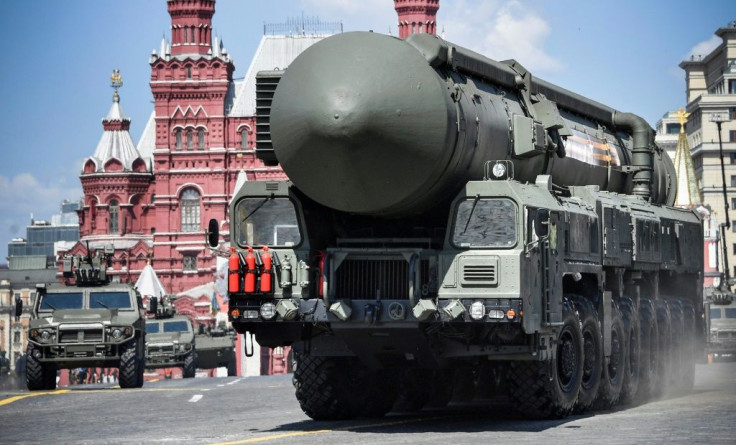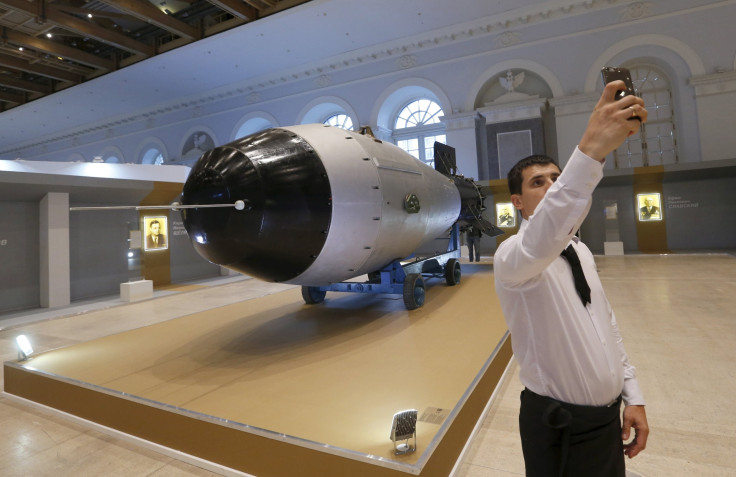Russia Holds The Record For The Largest, Strongest Nuclear Bomb Ever Detonated

KEY POINTS
- Soviet Union detonated Tsar Bomba on Oct. 30, 1961, in an archipelago in the Arctic Ocean
- Tsar Bomba's blast generated a large mushroom cloud and flashes seen as far as 620 miles away
- More than 2.2 million people would have died if Tsar Bomba had been detonated in Washington, D.C.
When it comes to the global stage of nuclear power, one nation consistently stands out as a dominant force: Russia.
With its rich history in nuclear research and formidable arsenal, Russia has cemented its position as the world's largest nuclear power. It also holds the world record for the largest, strongest nuclear bomb ever detonated with the Tsar Bomba.
Developed and detonated during the height of the Cold War, this colossal Soviet thermonuclear weapon forever etched its name in the history of destructive power.
The Tsar Bomba, also known as "Big Ivan" and the "King of Bombs," was detonated on Oct. 30, 1961, over the Novaya Zemlya archipelago in the Arctic Ocean.
According to Britannica, the bomb exploded about 2.5 miles (4 kilometers) above the ground and produced a mushroom cloud more than 37 miles (60 kilometers) high. The flash of Tsar Bomba's detonation was seen as far as 620 miles (1,000 kilometers) away.
The massive nuclear explosion leveled Severny, an uninhabited village 34 miles (55 kilometers) away from ground zero. Buildings and other structures more than 100 miles (160 kilometers) away were also reportedly damaged.
It was estimated that the heat generated by the blast could have caused third-degree burns to people up to 62 miles (100 kilometers).
In 2020, declassified footage of the thermonuclear bomb's blast was released via a documentary by Russia's state atomic agency.
The NUKEMAP website, created by nuclear weapons historian Alex Wellerstein, showed that if Tsar Bomba had been detonated in Washington, D.C., it would've killed more than 2.2 million people and caused over 1.6 million injuries.
The radioactivity from the nuclear explosion could have also spread as far as Philadelphia, Pennsylvania.
This megaton-class weapon was designed by a team of Soviet scientists led by Andrei Sakharov and was meant to show Soviet strength.
The Tsar Bomba was supposed to yield 100 megatons, but Soviet scientists were concerned about the risks of the resulting fallout from such a blast.
Thus, the Soviet Union modified the bomb to yield 50 megatons, estimated to be 3,800 times the strength of the U.S. atomic bombs dropped on Hiroshima and Nagasaki in Japan during World War II.
The nuclear device weighed 27 tons with a length of about 26 feet (8 meters) and a diameter of about 7 feet (2 meters).
Despite the Soviets' success in detonating the world's biggest nuclear device, the Tsar Bomba was never considered for operational use since it needed to be transported by conventional aircraft, which could easily be intercepted.
A few years after Tsar Bomba was detonated, the Soviet Union, the U.S. and the United Kingdom signed the Limited Nuclear Test Ban Treaty, prohibiting nuclear weapons tests in outer space, underwater, or in the atmosphere.
According to History Channel, the treaty was considered the first step towards nuclear arms control.
However, the dangers of a nuclear conflict remain as the Stockholm International Peace Research Institute (SIPRI) revealed that the global nuclear stockpile has expanded since last year.
SIPRI noted that Russia leads the major nuclear powers with 4,489 nuclear warheads.

© Copyright IBTimes 2024. All rights reserved.






















